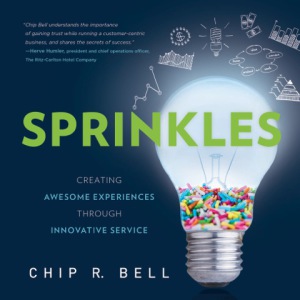 I listened to a sermon on Sunday in which the theme was that the pursuit of money is not the surest path to happiness. The pastor’s contention was that money does not automatically lead to freedom and safety.
I listened to a sermon on Sunday in which the theme was that the pursuit of money is not the surest path to happiness. The pastor’s contention was that money does not automatically lead to freedom and safety.
It’s one of those “yes, but…” themes: no one disagrees, but no one does anything. We get messages like these all the time—from motivational speakers, from our bosses, from our parents, but very little actually changes.
If you’re the one delivering the change message, how do you get out of the “yes, but…” rut? How do you break through inertia and complacency and actually make an actual difference in someone’s behavior? One of the most common devices that speakers use is a role model which listeners can measure themselves against, and, being found wanting, act to close the gap. Role models are excellent because they show what’s possible and they provide lessons for how to improve.
But that’s where a lot of speakers and writers make a mistake: they choose the wrong role models. They are either unrealistic or too different from the target audience.
It’s tempting to choose the most prominent person in the field, which is why we use Steve Jobs, or Martin Luther King, or Winston Churchill as shining examples of the speaker’s art, and churn out books such as “The Presentation Secrets of (insert famous name here)”.
What’s wrong with using folks like them as role models? You can’t identify with them: you don’t have the resources of a multi-billion dollar corporation behind you; you will never be Prime Minister with 40 years of parliamentary speaking experience under your belt, and if you ever get the chance to address a quarter of a million people from the Lincoln Memorial, please invite me.
If you’re coaching a high school freshman to play quarterback, who’s a better role model, Tom Brady or the senior starting QB? The role model has to be better, but not so much better that he or she is totally out of reach (insert picture of a dog reaching for a treat?)
If I want to get my dog to work hard for his treat, I have to hold it just the right distance from his nose. Too low, and he snaps it up immediately; too high, and he doesn’t even bother. But if I hold it just a millimeter beyond his reach, he will jump as high as possible and won’t quit until he gets it. It’s the same way with examples. Lofty, heroic examples make for dramatic stories, but they won’t inspire emulation, because we just don’t realistically see ourselves doing the same things that the outliers do.
Role models only work if we can identify with them, and plausibly see ourselves doing the same things they do. The pastor for Sunday’s sermon used a member of a Panamanian jungle tribe as his example of someone who had very little money but lots of freedom and safety. He totally lost me, because I could not even remotely relate—I couldn’t picture myself in a loincloth, eating monkeys for breakfast. If instead he had named someone from our community who exemplified those values, I believe my mind would have been actively engaged in comparison with that person.
In their book, The Power of Positive Deviance, the authors write about their successes in driving change from within societies or organizations, such as getting villagers to improve their eating habits, or encouraging hospital staff to wash their hands. The heart of their approach is to find people under the same circumstances who are already exhibiting the behaviors that need to be copied. That’s key: it can’t come from outside “experts” because they’re not seen as relevant or realistic, but when you see people just like you who are behaving better, you know that you can do it also.
So, when you’re choosing a role model, the question is not, “Who does it best?” It’s, “Who will help your target audience to do it best”?






